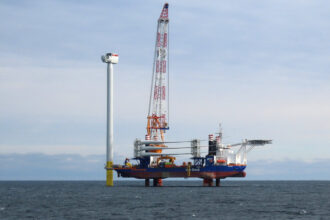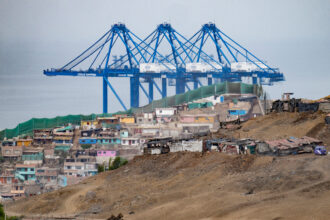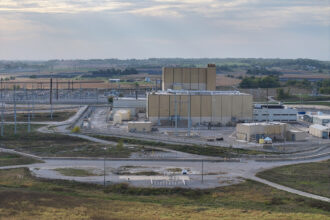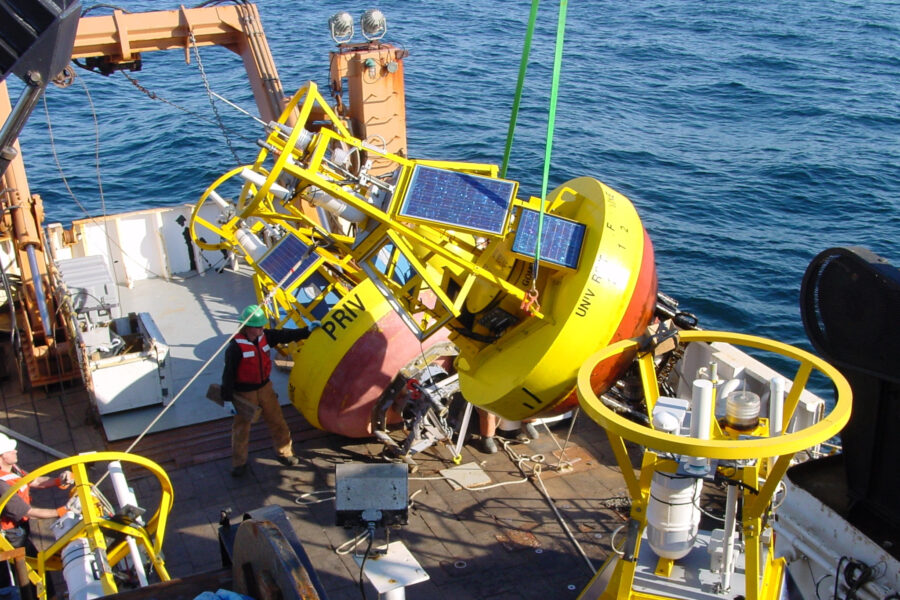The temperatures have soared as high as 90 degrees Fahrenheit, seals and other animals are inexplicably dying, and the once-dependable sea ice is long gone from the shores. Welcome to summer in Alaska in the Anthropocene.
Alaska just recorded its warmest July—and warmest month—on record, the National Oceanic and Atmospheric Administration (NOAA) announced Wednesday.
At a time when the Lower 48 states were clocking average temperatures 1°F above normal, Alaska’s temperatures were 5.4°F above average and 0.8°F more than the previous warmest month, which was July 2004.
With sea ice at a record low, the usual buffer that helps keep Alaska cool is gone, said Karin Gleason, a climate scientist with NOAA. “That exacerbates temperatures, because when you don’t have sea ice near the coastlines, then the temperature of the continent can warm sooner and earlier than it typically would.”
Arctic sea ice hit a record low in July after an early start to the melt season, according to the National Snow and Ice Data Center (NSIDC). The sea ice volume Arctic-wide was about 47 percent lower than the average from 1979-2018.
In Alaska, the ice is now about 150 miles from shore—a phenomenon that has only occurred in recent years and never before September, according to Rick Thoman, a climate scientist with the Alaska Center for Climate Assessment and Policy.

Alaska also had an unusual weather system to contend with in July. The same type of phenomenon that allowed scorching temperatures to sit over Europe earlier this summer—and Greenland more recently—also cooked Alaska.
“This July in particular, it appears there was a record high-pressure ridge that kind of got stuck over Alaska,” Gleason said.
That combination—the climate-driven trend of disproportionately warm summers with a weather-driven event layered on top—resulted in records falling across the state. Anchorage, normally in the high 50s to low 60s in July, clocked its first-ever 90°F day on July 4. In Utqiagvik, the northern-most city in the U.S., temperatures were 7.4°F higher than average, according to the National Weather Service. Wildfires scorched more than 1.1 million acres of the state.
“Boy can that do damage to things that should be frozen or cold,” said Gleason. “Places where the ground has been frozen seemingly forever are starting to thaw. That’s not a good thing when you have permafrost you want to keep, and glaciers you want to keep.”

Alaska’s permafrost contains a huge amount of carbon in the form of long-frozen grasses and other organic materials that also release methane as the ground thaws and the organic matter decays. As the region warms, research shows more permafrost is thawing. Arctic-wide, scientists have estimated that the permafrost contains twice as much carbon as what’s currently in the atmosphere. A 2012 article in the journal Nature estimated that thawing permafrost could warm the planet as much as 1.7°F over several centuries.
As the permafrost thaws along Alaska’s shorelines, the damage to communities and coastlines is compounded by stronger storms and coastal erosion.
Food Web Disruptions and Die-Offs
According to the National Snow and Ice Data Center, sea surface temperatures along the Alaska coast are at least 9°F above average. “This has implications for marine and land habitats, the food web, commerce and ultimately, communities across Alaska,” said Gleason.
Across Alaska, there have been reports this summer of a number of die-offs involving different species. Sea birds, gray whales, ice seals, mussels and krill have been reported dying in surprising numbers, raising questions among Alaska natives and scientists about whether climate change could be a driver.

On a survey in late July, a NOAA fisheries research team saw sub-arctic whales at higher latitudes than ever before. The humpback and fin whales they recorded were in areas that are normally devoid of large whales, leading to the hypothesis that their ranges are expanding due to less sea ice and warming ocean temperatures.
“It doesn’t surprise me that there are stories of wildlife dying or migrating places that they aren’t normally,” said Gleason. “They have to do what they have to do to try and survive. They’ll adapt where they can and where they can’t, unfortunately, there’s loss.”
Published Aug. 7, 2019
About This Story
Perhaps you noticed: This story, like all the news we publish, is free to read. That’s because Inside Climate News is a 501c3 nonprofit organization. We do not charge a subscription fee, lock our news behind a paywall, or clutter our website with ads. We make our news on climate and the environment freely available to you and anyone who wants it.
That’s not all. We also share our news for free with scores of other media organizations around the country. Many of them can’t afford to do environmental journalism of their own. We’ve built bureaus from coast to coast to report local stories, collaborate with local newsrooms and co-publish articles so that this vital work is shared as widely as possible.
Two of us launched ICN in 2007. Six years later we earned a Pulitzer Prize for National Reporting, and now we run the oldest and largest dedicated climate newsroom in the nation. We tell the story in all its complexity. We hold polluters accountable. We expose environmental injustice. We debunk misinformation. We scrutinize solutions and inspire action.
Donations from readers like you fund every aspect of what we do. If you don’t already, will you support our ongoing work, our reporting on the biggest crisis facing our planet, and help us reach even more readers in more places?
Please take a moment to make a tax-deductible donation. Every one of them makes a difference.
Thank you,
















